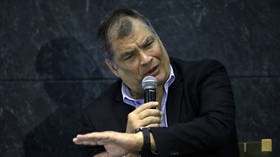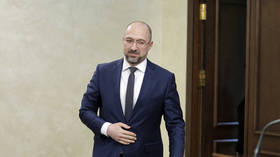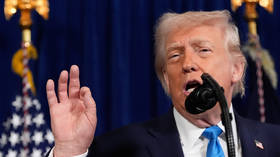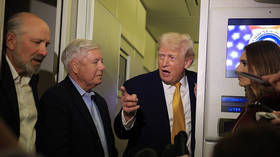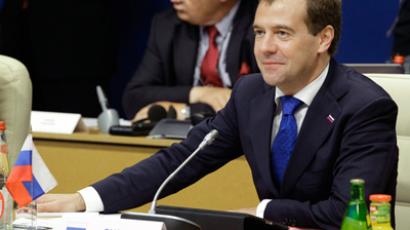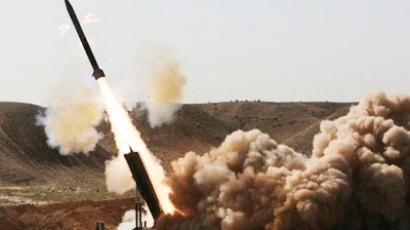US AMD dilemma: Big dollar or world peace?
Russia’s President Medvedev sent a sharp warning this week to Western powers over the planned NATO missile shield in Europe. He said if the plans go ahead without guarantees of Russia's safety, Moscow would deploy missiles of its own.
Years of negotiations over the proposed shield, which America wants to place in Turkey and in former Warsaw Pact countries on Russia’s western border, have been deadlocked over the US refusal to agree to Russian participation in the project.America says the anti-missile shield is aimed at protecting Europe from so-called rogue states like North Korea and Iran, but Russia sees it as a threat to its own national security.Russia says the US has still not given adequate assurances over who will be targeted, prompting stern words from President Dmitry Medvedev and a pledge that Moscow will deploy its own state-of-the-art missiles on Europe’s eastern flank.“If other measures are insufficient, Russia will deploy contemporary strike systems in the west and south in order to prevent fire damage from US missile defenses deployed in Europe,” he declared. “The deployment of the Iskander missile system in the Kaliningrad region will be one such step.”The move has raised concerns that New START, a landmark nuclear disarmament process agreed to by Russia and the US, could be derailed.“Given the inextricable link between strategic offensive and defensive weapons, reasons could emerge for Russia's withdrawal from the Strategic Arms Reduction Treaty. This is envisioned within the content of the treaty,” the Russian president added.Russia and the United states had hoped to “reset” relations between them after years adrift during the Bush era. Remarks from President Obama in 2009 led to optimism that the missile defense program would be scaled down.However, the United States now plans to increase the number of countries where it will place missile defense systems – and all of those nations are in Russia's back yard. It’s a move which runs counter to earlier assurances from Washington that they would do no such thing.Analysts say the American strategy amounts to a game of brinkmanship with a potentially devastating outcome.“Once one side has missile defense, it may encourage that side to launch a first strike,” political analyst Aleksandr Pavic told RT. “So this kind of movement, these kinds of threats, actually increase the chance of a nuclear war.”Although Washington maintains its shield would protect against nuclear attack from states like Iran, those following the system’s development believe it only ever had one target.“The American version that it's directed against Iran is completely absurd. Every geopolitical analyst knows this is directed against Russia,” Asia Times correspondent Pepe Escobar believes. “This is not the Obama administration – this is a Pentagon program.”There are also those who lay the blame for escalating the situation at the door of weapons manufacturers.“I think it's being driven by the military industrial complex in the US that's getting billions of dollars in contracts to build these missiles,” says Alice Slater, director of the Nuclear Age Peace Foundation. “The irony is that we have professors at MIT and former military people that say it could never work. In other words, it really wouldn't protect the US against any kind of offensive missiles because it's so easy to use decoys.”Disarmament campaigner Bruce K. Gagnon echoed Slater’s statements, saying that Moscow's worries are completely justified because the American arms industry stands to profit from encircling Russia with missiles.“The weapons corporations in America always love a new enemy and they always love new instability, because they are able to sell more weapons that way, and the weapons industry is the number one industrial product of America today,” he told RT. “It’s what drives US foreign and military policy. The missile defense system is the shield to be used to pick off retaliatory strikes.“After a US first strike sword has been thrust at either Russia or China, I don’t think it’s paranoia on the part of Russia, as they look and they see NATO and the US beginning an encirclement of their country,” he concluded.According to Russia's envoy to NATO, Dmitry Rogozin, Moscow will in any case push for transparency in the construction of the missile shield, so that every country involved can feel safe.“We have direct instructions from the Russian president to carry on our consultations with American and NATO partners until the US passes the point of no return in this matter. The point of no return is the finalization of the European ABM system,” he told a press conference in Moscow. “If Russia makes sure that the matter in question is the deployment of ABM sites in locations from which its strategic nuclear forces can be monitored, our phased adaptive approach will be implemented in full.”At the same time, Rogozin pointed out that there is still time for negotiations.“We are calling upon our American counterparts and NATO partners to waste no time and make sure that all European countries involved in the ABM project (even those involved against their will) get not only assurances, but legally-binding guarantees based on specific technical criteria of missile defense,” he said, adding that such criteria include the number of interceptor missiles, their deployment locations, their range, flight altitude and velocity.The Kremlin stresses that Russia remains open to dialogue with the US and NATO over missile defense issues. However if a dialogue is to take place, a clear legal framework defining who the real target is must first be established.




